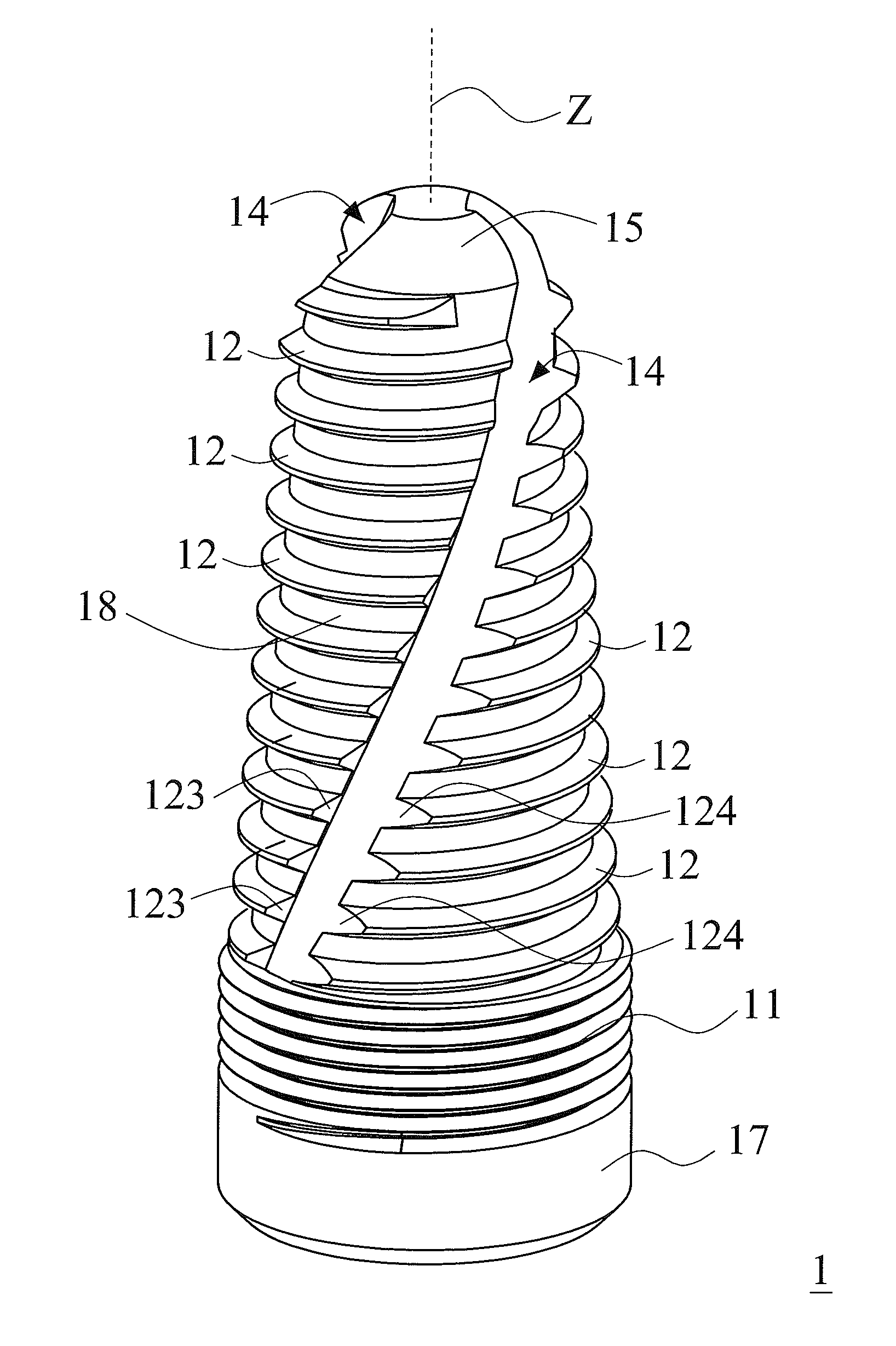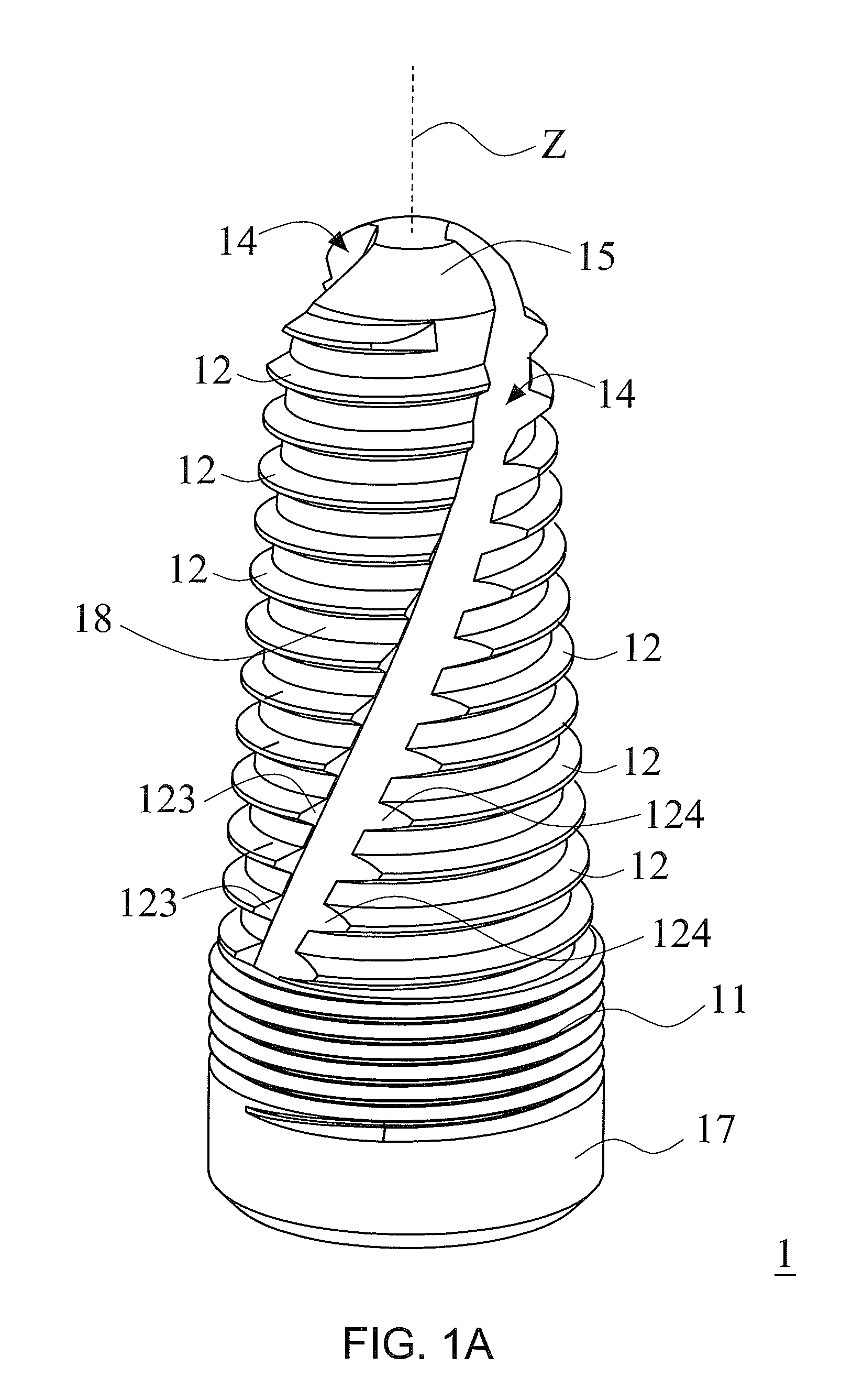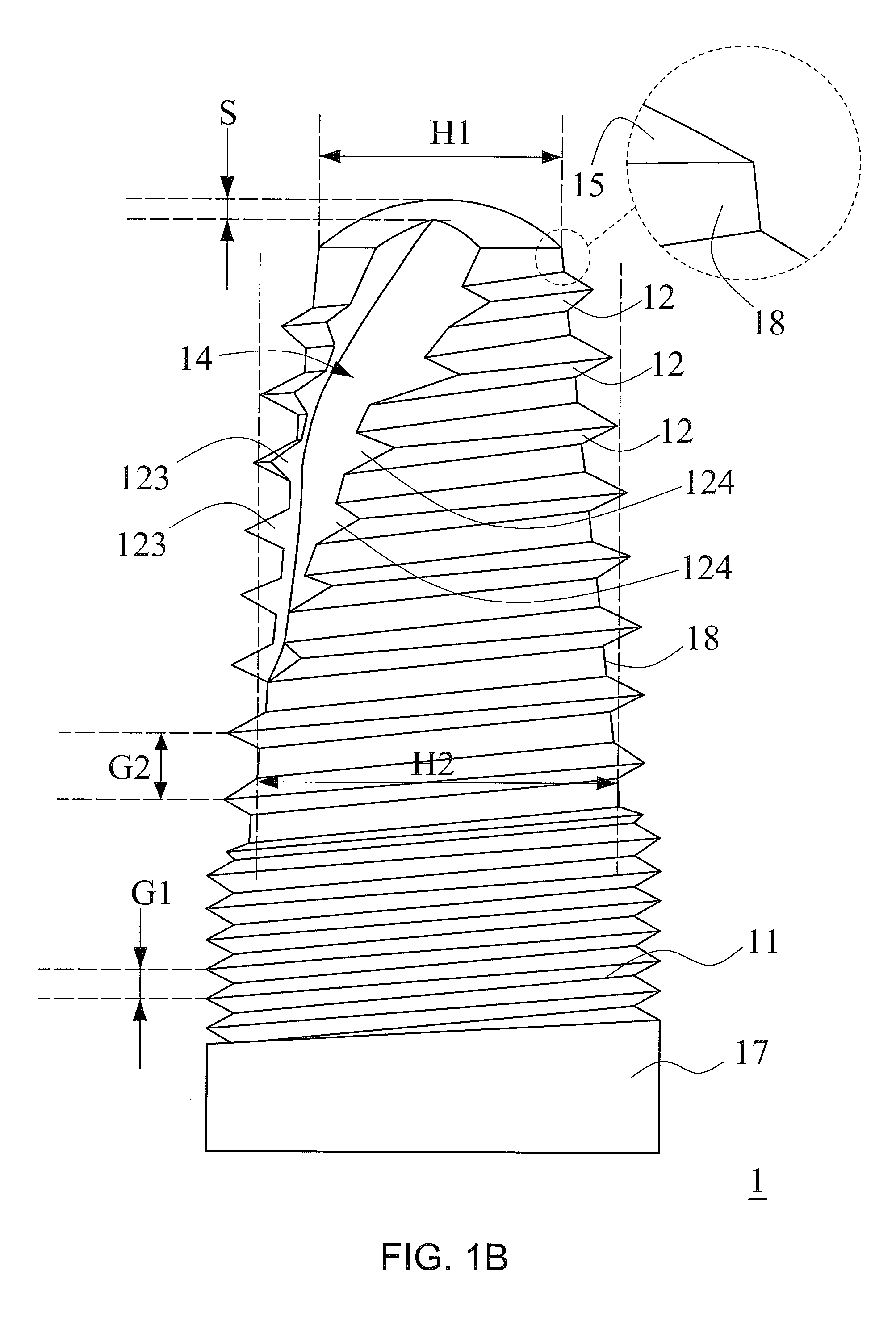Dental Implant
a technology for dental implants and implants, applied in dental implants, dental surgery, medical science, etc., can solve the problems of increasing the error probability of fault drilling or over-deep drilling, shortened dental restoration surgery time, and pain for dental patients, so as to reduce mouth trauma and pain relief for dental patients
- Summary
- Abstract
- Description
- Claims
- Application Information
AI Technical Summary
Benefits of technology
Problems solved by technology
Method used
Image
Examples
second embodiment
[0073]Referring to FIG. 4, which is a side view of dental implant of second embodiment according to the present disclosure. As shown in FIG. 4, the second thread portion 12 of the dental implant 1 is rotated around the drilling axial direction Z and formed the tangent direction J. The tangent direction J of the second thread portion 12 and a horizontal line are intersected to form an angle λ. The tangent direction J is generally orientated from lower left toward upper right. The tangent direction J of the second thread portion 12 is slightly slanted, and formed an angle Φ if the tangent direction J is rotated toward the lower end of the drilling axial direction Z to intersect with the trench 14 (i.e. the angle Φ is intersected by the tangent direction J and the trench 14). The angle Φ is smaller than or equal to 90 degrees (i.e. Φ≦90 degrees). Consequently, as the dental implant 1 is screwing into the jaw bone 91 in the clockwise direction, the cutting face 123 of the second thread ...
third embodiment
[0075]The present invention provides other embodiments. Please refer to FIG. 5, which is a side view of dental implant of third embodiment according to the present invention. As shown in FIG. 5 and the partial enlarged view, the head portion 15 is smoothly connected with the body portion 18 in arc-shaped without acute angle corner. As the head portion 15 of the dental implant 1 is drilling into the deep of the jaw bone 91, the interconnecting area of the head portion 15 and the body portion 18 has a smaller friction resistance, which may bring benefit to the implanting process if the dental implant 1 is drilled into the jaw bone 91. Since the head portion 15 of the dental implant 1 has a planar top end, the blunt head portion 15 can disperse the occlusion impact while biting food (because the bearing pressure is inversely proportional to the area of thrust surface).
[0076]Please refer to FIG. 6A to FIG. 6C. FIG. 6A a perspective view of dental implant of fourth embodiment according t...
fifth embodiment
[0078]Please refer to FIG. 7E, which is a side view of derivative dental implant according to the present invention. As shown in FIG. 7E, the second thread portion 12 of the dental implant 1 is rotated around the drilling axial direction Z and forms a tangent direction J. The tangent direction J of the second thread portion 12 is intersected with the horizontal line to form an angle λ. The tangent direction J is generally orientated from lower right toward upper left. The tangent direction J of the second thread portion 12 toward a lower end of the drilling axial direction Z is intersected with the trench 14 so as to form an angle Φ, and the angle Φ is smaller than 90 degrees (i.e. Φ≦90 degrees). As the dental implant 1 of this embodiment is screwed into the jaw bone 91, the cutting face 123 of the second thread portion 12 will move along the tangent direction J, and hence squeezes the bone scraps 92 toward the tangent direction J. In the meanwhile, a right wall of the trench 14 (co...
PUM
 Login to View More
Login to View More Abstract
Description
Claims
Application Information
 Login to View More
Login to View More - R&D
- Intellectual Property
- Life Sciences
- Materials
- Tech Scout
- Unparalleled Data Quality
- Higher Quality Content
- 60% Fewer Hallucinations
Browse by: Latest US Patents, China's latest patents, Technical Efficacy Thesaurus, Application Domain, Technology Topic, Popular Technical Reports.
© 2025 PatSnap. All rights reserved.Legal|Privacy policy|Modern Slavery Act Transparency Statement|Sitemap|About US| Contact US: help@patsnap.com



